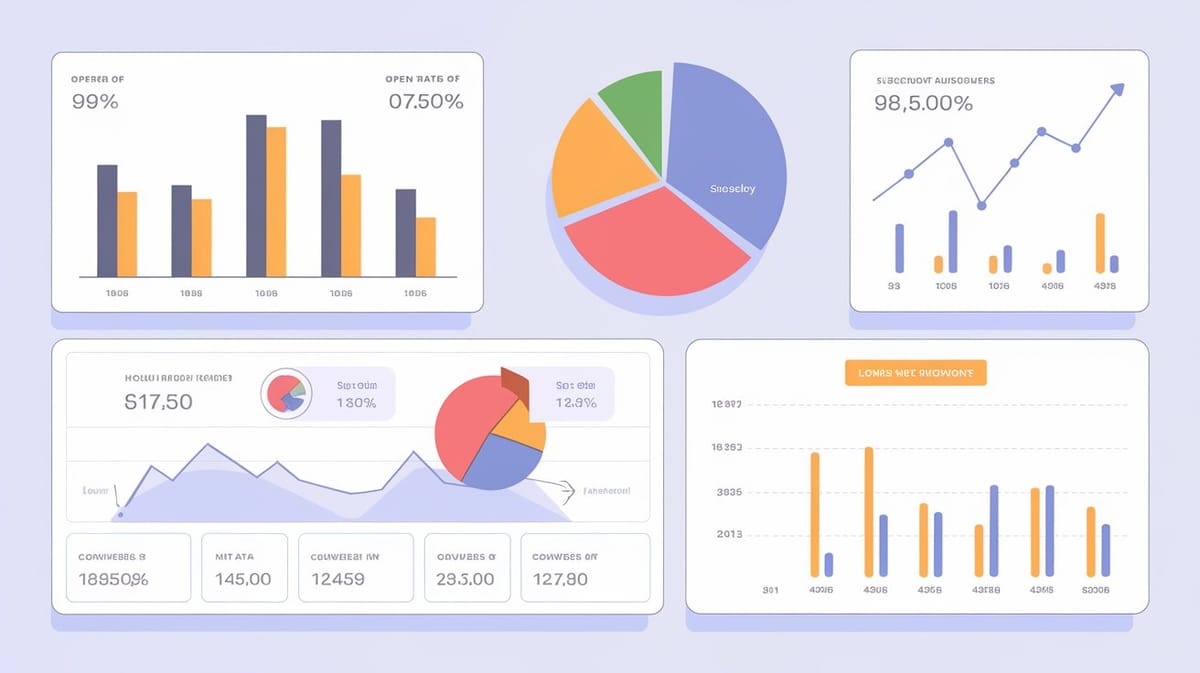Email Analytics: 8 Email Marketing Metrics You Should Track

Email marketing remains one of the most effective digital marketing strategies, offering unparalleled return on investment (ROI) and direct engagement with audiences. With over 4.5 billion daily email users globally, projected to grow to 4.8 billion by 2027, email marketing continues to be a cornerstone for businesses aiming to connect with their customers. However, the success of email marketing campaigns hinges on the ability to track and analyze key metrics effectively. This report explores the eight most crucial email marketing metrics that marketers should track to optimize their campaigns and achieve better results.
You can also visit Oncely.com to find more Top Trending AI Tools. Oncely partners with software developers and companies to present exclusive deals on their products. One unique aspect of Oncely is its “Lifetime Access” feature, where customers can purchase a product once and gain ongoing access to it without any recurring fees. Oncely also provides a 60-day money-back guarantee on most purchases, allowing customers to try out the products and services risk-free.
Oncely are hunting for the most fantastic AI & Software lifetime deals like the ones below or their alternatives:

1. Open Rate
Definition and Importance
The open rate measures the percentage of recipients who open an email. It is one of the most fundamental metrics for gauging the effectiveness of your subject lines and the timing of your email delivery. A higher open rate indicates that your email is capturing the audience's attention at first glance.
Industry Benchmarks
The average open rate across all industries is approximately 21.33% (Mutant Mail). However, this can vary depending on the industry and audience demographics.
How to Improve Open Rates
- Craft Engaging Subject Lines: Use compelling, concise, and personalized subject lines to grab attention.
- Optimize Send Times: Experiment with different times and days to identify when your audience is most likely to open emails.
- Segment Your Audience: Tailor your emails to specific audience segments based on their preferences and behaviors.
2. Click-Through Rate (CTR)
Definition and Importance
CTR measures the percentage of recipients who clicked on a link within your email. This metric indicates how well your email content resonates with your audience and drives engagement.
Industry Benchmarks
CTR typically ranges between 2% and 5%, depending on the industry and type of campaign (Forbes Advisor).
How to Improve CTR
- Use Clear Call-to-Actions (CTAs): Ensure your CTAs are prominent, actionable, and aligned with the email's purpose.
- A/B Testing: Experiment with different designs, copy, and placements of CTAs to determine what works best.
- Personalize Content: Tailor your email content to address the specific needs and interests of your audience.
3. Conversion Rate
Definition and Importance
The conversion rate measures the percentage of recipients who completed a desired action, such as making a purchase, signing up for a webinar, or downloading a resource. This metric reflects the ultimate success of your email campaign in achieving its goals.
How to Improve Conversion Rates
- Align Content with Goals: Ensure the email content aligns with the desired action.
- Simplify the Process: Reduce the number of steps required to complete the action.
- Incorporate Social Proof: Use testimonials, reviews, or case studies to build trust and encourage conversions.
4. Bounce Rate
Definition and Importance
Bounce rate refers to the percentage of emails that could not be delivered to recipients' inboxes. There are two types of bounces:
- Soft Bounce: Temporary issues such as a full inbox or server problems.
- Hard Bounce: Permanent issues like invalid email addresses.
How to Reduce Bounce Rates
- Regularly Clean Your Email List: Remove invalid or inactive email addresses.
- Use Double Opt-In: Ensure subscribers confirm their email addresses during sign-up.
- Monitor Sender Reputation: Avoid being flagged as spam by maintaining a good sender reputation.
5. Unsubscribe Rate
Definition and Importance
The unsubscribe rate measures the percentage of recipients who opt out of your email list after receiving a campaign. While some level of unsubscribes is normal, a high rate may indicate issues with your email content or frequency.
How to Reduce Unsubscribe Rates
- Deliver Relevant Content: Ensure your emails provide value to your audience.
- Set Expectations: Clearly communicate the type and frequency of emails during the sign-up process.
- Offer Preferences: Allow subscribers to customize the type and frequency of emails they receive.
6. Revenue Per Email (RPE)
Definition and Importance
RPE calculates the revenue generated from each email sent. This metric helps businesses assess the financial success of their email campaigns and set benchmarks for future campaigns.
How to Improve RPE
- Segment and Target: Use audience segmentation to send personalized offers.
- Leverage A/B Testing: Test different email formats, offers, and CTAs to identify what drives the most revenue.
- Optimize Timing: Send emails when recipients are most likely to make a purchase.
7. Email ROI
Definition and Importance
Email ROI measures the return on investment for your email marketing efforts. With an average ROI of 3,600%—equating to $36 for every $1 spent—email marketing is one of the most cost-effective strategies.
How to Maximize ROI
- Focus on High-Performing Campaigns: Analyze past campaigns to identify what works best.
- Automate Campaigns: Use marketing automation to reduce costs and improve efficiency.
- Invest in Quality Tools: Leverage email marketing platforms with advanced analytics and automation features.
8. List Growth Rate
Definition and Importance
The list growth rate measures the rate at which your email list is growing. A healthy growth rate indicates that your audience is expanding and that your lead generation strategies are effective.
How to Improve List Growth Rate
- Offer Incentives: Provide value, such as exclusive content or discounts, in exchange for email sign-ups.
- Leverage Social Media: Promote your email list on social media platforms.
- Optimize Sign-Up Forms: Make it easy for users to subscribe by simplifying your sign-up forms.
Conclusion
Tracking email marketing metrics is essential for understanding the performance of your campaigns and making data-driven decisions. By focusing on these eight key metrics—open rate, click-through rate, conversion rate, bounce rate, unsubscribe rate, revenue per email, email ROI, and list growth rate—marketers can refine their strategies, improve engagement, and achieve better results. As email marketing continues to evolve with trends like hyper-personalization and AI-driven analytics, staying informed and adaptable will be crucial for success in 2025 and beyond.





